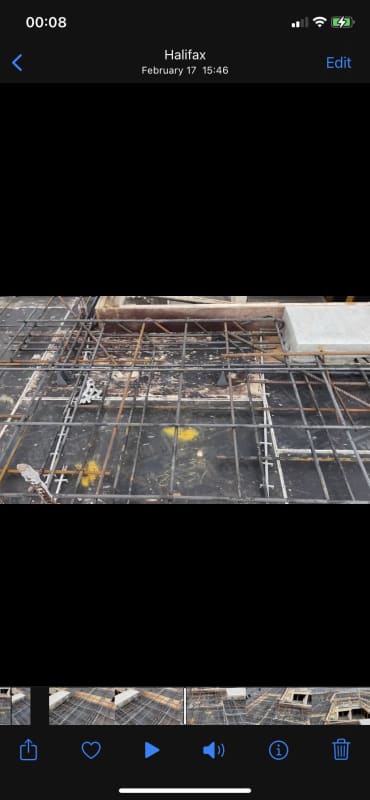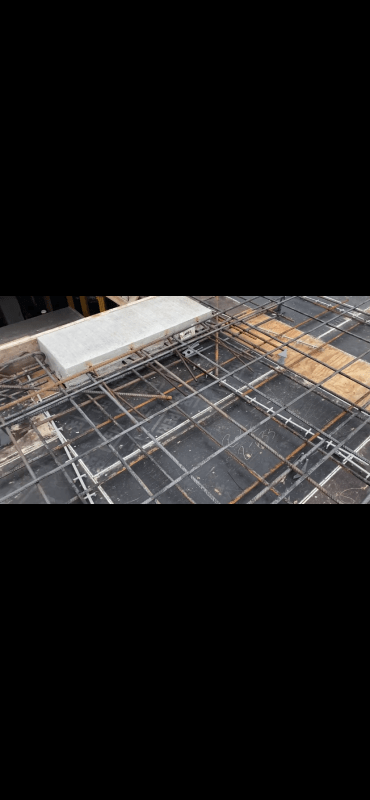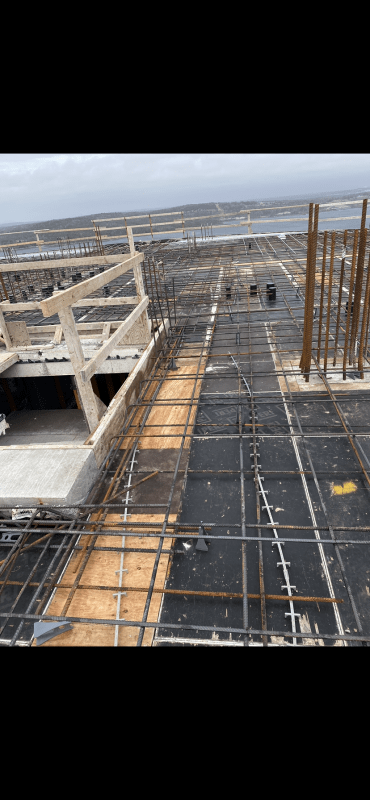Hello great minds, I have been having sleepless night after a visit to a construction site.I noticed the third-floor slab openings for stairway didn’t have diagonal bars, just vertical and horizontal bars. My question is without the diagonal bars will there be cracks which could result to collapse of the floor.I’m new to site visits for flat slab system.
Navigation
Install the app
How to install the app on iOS
Follow along with the video below to see how to install our site as a web app on your home screen.
Note: This feature may not be available in some browsers.
More options
Style variation
-
Congratulations MintJulep on being selected by the Eng-Tips community for having the most helpful posts in the forums last week. Way to Go!
You are using an out of date browser. It may not display this or other websites correctly.
You should upgrade or use an alternative browser.
You should upgrade or use an alternative browser.
Missing diagonal bars in slab opening 2
- Thread starter Damotozey
- Start date
- Status
- Not open for further replies.
I don't know the circumsances, but other than concrete water tanks, I don't use diagonal bars... horizontal and vertical generally provide lots of reinforcing.
So strange to see the singularity approaching while the entire planet is rapidly turning into a hellscape. -John Coates
-Dik
So strange to see the singularity approaching while the entire planet is rapidly turning into a hellscape. -John Coates
-Dik
GeorgeTheCivilEngineer
Structural
There might be some minor cracking that wouldn't have otherwise occurred, but certainly no collapse risk (assuming orthogonal reinforcement is adequate!). Diagonal bars won't stop things from falling over.
-
1
- #6
I picked up not using diagonal bars from RJC, over 50 years back, who at the time were probably one of the best RC engineers consultants in the country. The last company I was with, Lavalin, had a blog where engineers asked design questions. One of the topics that came up was the use of diagonal bars. I was surprised that so many engineers still used them. If you want them for crack control, then increase the size of the bars framing the opening, and eliminate them. One of the problems is that they increase congestion of reinforcing in a critical location leading to poor concrete placement, just where you don't need it. Forgot to add, with water containers, you are generally looking at much thicker walls and the congestion is less of an issue, and crack control is generally a good thing. I wish I could think of all the reasons at one time.
![[pipe] [pipe] [pipe]](/data/assets/smilies/pipe.gif)
So strange to see the singularity approaching while the entire planet is rapidly turning into a hellscape. -John Coates
-Dik
![[pipe] [pipe] [pipe]](/data/assets/smilies/pipe.gif)
So strange to see the singularity approaching while the entire planet is rapidly turning into a hellscape. -John Coates
-Dik
- Thread starter
- #7
Thank you everyone for your contributions. I really appreciate.
@dik
There is a part I forgot to mention though, a side of the opening had diagonal bars, the other side didn’t.I’ve attached the picture of the other side. Won’t stress be transferred from the part with diagonal to the part without? Or it’s still the same scenario like you’ve earlier stated “the horizontal and vertical bars” are good to go?



@dik
There is a part I forgot to mention though, a side of the opening had diagonal bars, the other side didn’t.I’ve attached the picture of the other side. Won’t stress be transferred from the part with diagonal to the part without? Or it’s still the same scenario like you’ve earlier stated “the horizontal and vertical bars” are good to go?



I've been doing the "no diagonals" thing the same as dik with no adverse consequences so far. But, then, dik and I worked at the same place at different times so it's a bit incestuous. To my knowledge the diagonals still show up in a lot of the ACI and CRSI literature so it's no surprise that designers continue to include them. In the back of my mind, I'm still waiting for someone to come along and tell me that, in fact, there is indeed some crack control function that only a diagonal bar can do well.
Nah. You're grossly overestimating the amount of design effort that goes into the specification of the diagonals. It's just boiler plate "2 - #5 x 4'-0" T&B at all corners" kind of stuff.
OP said:Won’t stress be transferred from the part with diagonal to the part without?
Nah. You're grossly overestimating the amount of design effort that goes into the specification of the diagonals. It's just boiler plate "2 - #5 x 4'-0" T&B at all corners" kind of stuff.
I built a roof top slab with a roof hatch. It was reinforced pretty heavily but I neglected to install diagonals at the corners of the opening. Ended up with four hairline cracks at the corners. Would that happened with diagonal bars? Who knows.
XR250 said:Ended up with four hairline cracks at the corners. Would that happened with diagonal bars? Who knows.
My money's on "yes". This speaks to slab on grade but I suspect that much of the principles would still apply: Link

For small openings in a SOG, I don't add corner bars, but at re-entrant corners I do. There's a big difference in why the slab cracks at the corner. In one case it shrinkage, in the other it's restraint. ![[pipe] [pipe] [pipe]](/data/assets/smilies/pipe.gif)
So strange to see the singularity approaching while the entire planet is rapidly turning into a hellscape. -John Coates
-Dik
![[pipe] [pipe] [pipe]](/data/assets/smilies/pipe.gif)
So strange to see the singularity approaching while the entire planet is rapidly turning into a hellscape. -John Coates
-Dik
dik said:There's a big difference in why the slab cracks at the corner. In one case it shrinkage, in the other it's restraint.
I would argue that it's not such a big difference since the lion's share of any restraint cracking is a result of restraint to shrinkage.
- Thread starter
- #16
-
1
- #17
dik said:One's local and the other isn't...
I feel that they're both local. Restraint induced tension stresses at the corners causing tension cracks at the corners. If orthogonal reinforcing would work for one case, it's rational to assume that it would work for both cases. At a re-entrant corner in an SOG, the restraint comes predominantly from the nearby subgrade drag; at an interior opening, it comes predominantly from the surrounding slab. The result is nearly identical in my mind.
I am in agreement with everyone else here, we typically specify them at corners for crack control and as others have said using a typical note and no calculations for such bars. I can't say whether it has or hasn't helped with cracks, the theory is that it does based on how the cracks form at angles in concrete, hence why circular closure pours are typically better than diamond shaped. I am willing to bet that regardless of what is specified they get missed on many projects.
My experience has been that with openings, you are looking at a fairly local condition whereas with reentrant corners, there can be a restriant at the one side of the 'notch' and this can cause additional cracking forces. For reentrant corners I always (nearly) put additional bars... generally a series of 3 15Mx10.0 (#5) bars. I cannot find a detail, only reinforcing with an insertion point. ![[pipe] [pipe] [pipe]](/data/assets/smilies/pipe.gif)
So strange to see the singularity approaching while the entire planet is rapidly turning into a hellscape. -John Coates
-Dik
![[pipe] [pipe] [pipe]](/data/assets/smilies/pipe.gif)
So strange to see the singularity approaching while the entire planet is rapidly turning into a hellscape. -John Coates
-Dik
- Status
- Not open for further replies.
Similar threads
- Replies
- 4
- Views
- 815
- Question
- Replies
- 1
- Views
- 5K
- Locked
- Question
- Replies
- 3
- Views
- 3K
- Question
- Replies
- 3
- Views
- 2K
- Replies
- 29
- Views
- 5K
